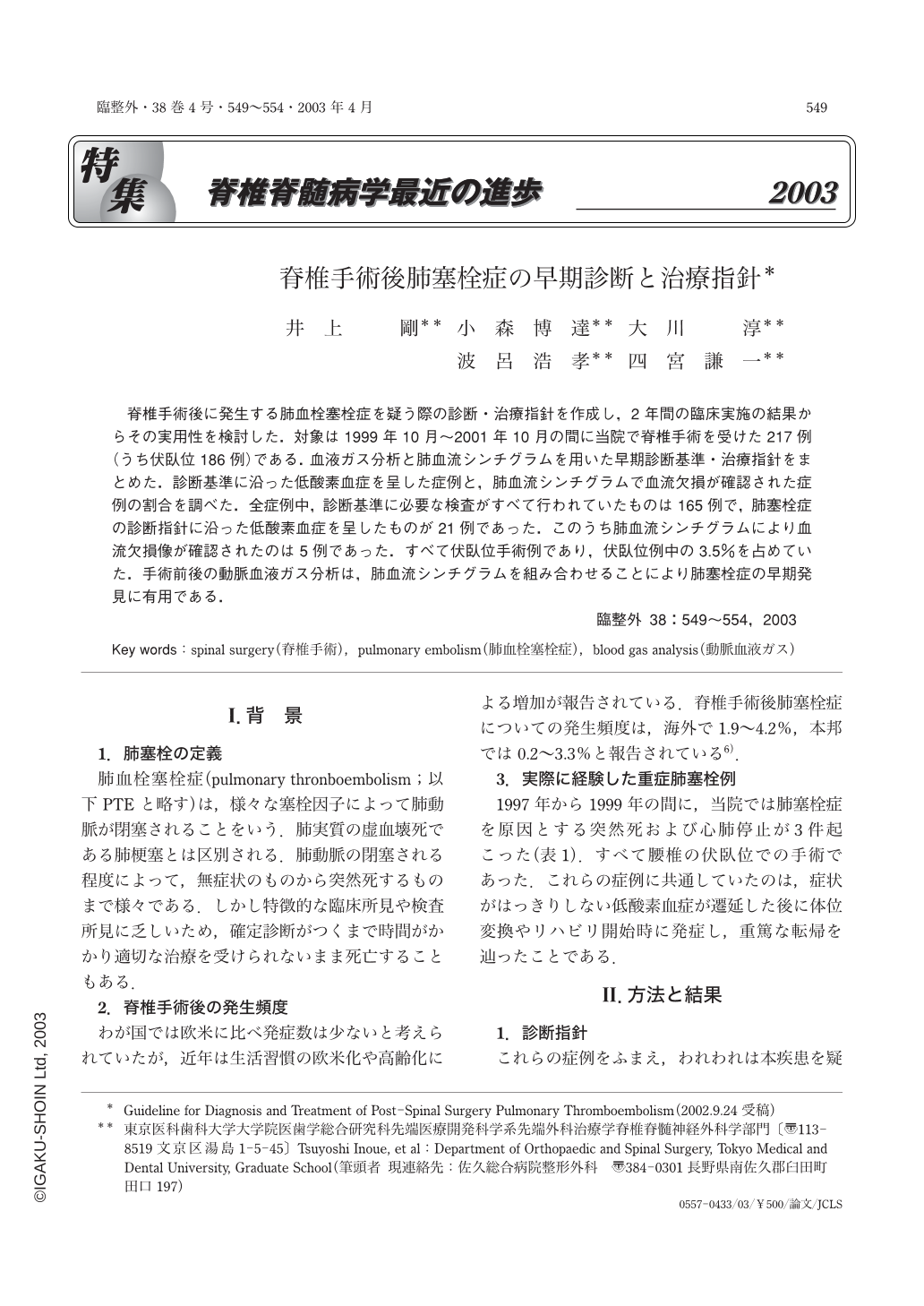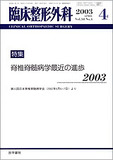Japanese
English
- 有料閲覧
- Abstract 文献概要
- 1ページ目 Look Inside
脊椎手術後に発生する肺血栓塞栓症を疑う際の診断・治療指針を作成し,2年間の臨床実施の結果からその実用性を検討した.対象は1999年10月~2001年10月の間に当院で脊椎手術を受けた217例(うち伏臥位186例)である.血液ガス分析と肺血流シンチグラムを用いた早期診断基準・治療指針をまとめた.診断基準に沿った低酸素血症を呈した症例と,肺血流シンチグラムで血流欠損が確認された症例の割合を調べた.全症例中,診断基準に必要な検査がすべて行われていたものは165例で,肺塞栓症の診断指針に沿った低酸素血症を呈したものが21例であった.このうち肺血流シンチグラムにより血流欠損像が確認されたのは5例であった.すべて伏臥位手術例であり,伏臥位例中の3.5%を占めていた.手術前後の動脈血液ガス分析は,肺血流シンチグラムを組み合わせることにより肺塞栓症の早期発見に有用である.
Purpose:The purpose of this study was to formulate a guideline for diagnosis and treatment when pulmonary thromboembolism (PTE) is suspected after spinal surgery and to evaluate its usefulness based on its clinical application over a period of two years.
Subjects:The subjects were 217 patients (including 186 in whom surgery was performed in the prone position) on whom spinal surgery was performed in our department between October 1999 and October 2001.
Methods:We formulated a guideline for the diagnosis and treatment based on the results of blood gas analysis and lung perfusion scintigraphy. After the study period, we investigated the numbers of patients that had become hypoxemia or showed abnormalities on lung scintigrams.
Results:A total 165 cases (143 prone position) were fully examined according to the criteria, and there were 21 patients who became hypoxemia and 5 who had abnormalities on lung scintigrams. The cases with abnormalities on scintigrams had been all operated on in the prone position, and they accounted for 3.5 percent of all patients operated on in the prone position.
Discussion:When combined with lung scintigraphy, blood gas analysis in the peri-operative period is useful for early detection of PTE.

Copyright © 2003, Igaku-Shoin Ltd. All rights reserved.


